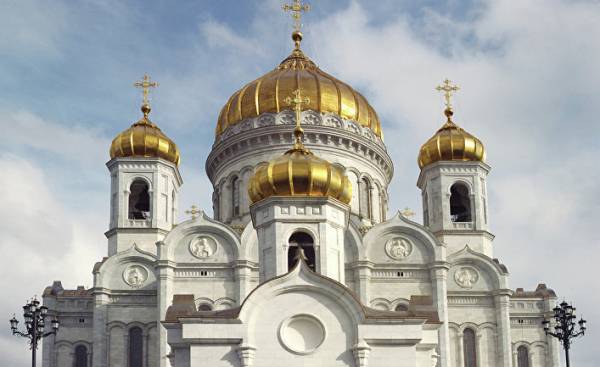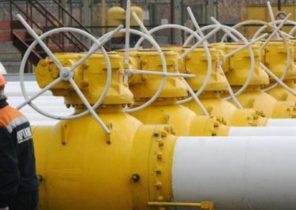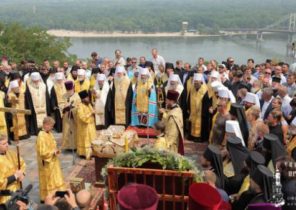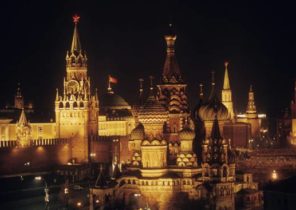
The question is, how many today in Russia there are churches, other churches and cathedrals, tourists, pilgrims answer: about 25 thousand, i.e. three times more than before the October revolution.
What is the comparison?
One explanation is due to the fact that in 1917, in accordance with Lenin’s slogan “religion is the opium of the people”, the country began a terrible persecution of the Church, faith and believers.
When I got to the anti-religious wave, in the beginning of this violent reprisals temples one by one compared with the earth or desecrated and robbed. After the time when the changed public mood and power, many temples were rebuilt from the ruins. In addition, was built and brand new.
After visiting some churches in Moscow, in the cities of the Golden ring around the Russian capital and the second largest Russian city Saint-Petersburg this begs the question: what does such a large variety of Orthodox shrines in this vast country? The matter of piety, or is a characteristic sign of the strength of the Russian people?
Which of all these temples the grandest, the most visited, the most significant? Which one is the best? It is difficult to make a list and say, “This!”
When you come to Saint Petersburg, the former capital of the Empire, not so easy to decide in which direction to go and what to see.
Many cultural monuments, theaters, the magic of the Hermitage Museum (in six buildings), where three million paintings and other wonderful items. As well as the Park of Peter the Great, the perfect copy of the French Versailles architectural gems along the Neva river, the bridges over which, during the white nights (end of June and beginning of July) flock to the sky — here are just some of the beauties of this “window to Europe”.
The city’s fabulously decorated Church on spilled blood and the blue and white Smolny Cathedral, and especially Isaac’s Cathedral, the diamond, which was erected for 14 years (SIC — approx. TRANS.).
And in Moscow on red square is one of the most beautiful, as you say, churches in Russia — the colorful St. Basil’s Cathedral. To compete with it can only be the Cathedral of Christ the Saviour, although they are very different in size, appearance, interior decoration, time and reasons for it.
The Church of Saint Basil was built in the mid 16th century by order of Ivan the Fourth in honor of the mother of God and in honor of full Russian victory over the Tartars. This Cathedral (one of the seven wonders of Russia), which consists of eight small churches gathered around the main, is a legend. Allegedly, after the completion of the Tsar blinded the architects so they have not created anything more wonderful. However, little is known about who really was Saint Basil, who is buried here. The short explanation is that he was a very respected man, because only he dared to say to Ivan the terrible truth.
This Church has become for many Russian “heavenly castle” was going to destroy the base of the French when they left in 1812 from Moscow. But I couldn’t. The same idea was visited by Stalin. Iconic building in the city center very worried about him. However, thanks to the architect, known for Pyotr Baranovsky, the Cathedral is preserved, although the Baranowski paid for the role of “defender”. Soon, on the orders of the leader of the Communists turned the Church into the State historical Museum.
Changes began only in the early 90s. In the Cathedral again, the services are held. In our days St. Basil’s Cathedral is a world heritage site by UNESCO.
The Church is open for visitors. Entrance fee. From the bell tower and the Windows offer a wonderful view of the surrounding area. In the Church many icons and other Holy relics and items. It sells a variety of brochures and Souvenirs.
A few blocks away on the left Bank of the Moscow river stands the Temple of Christ the Savior. The Communists demolished the original Cathedral in early December 1931. They didn’t care that this Cathedral temple of the Russian Orthodox Church was built in honor of the victory over Napoleon, and the walls were covered with names of fallen officers. The Cathedral was built more than 40 years with four Russian emperors. Then during Nikita Khrushchev’s someone came up with the “brilliant” idea to build a pool. People were splashing in the center of the city a long time, despite serious warnings about the fact that evaporation is very harmful to the valuable canvas in the Pushkin Museum, which is nearby. In the end, the pool was closed and this place when Boris Yeltsin built a new building of the Cathedral with a few differences from the original 19th century when the Russian said goodbye to the last French soldier. Instead of gilded domes now gleam the domes are made of titanium nitride. The facade is faced with marble, and the magnificent reliefs made of bronze.
The entrance to the Church is free. It is impossible to photograph. Phones should be off. On the left side of the entrance are printed forms for notes to God. A bit like the wailing Wall in Jerusalem. It notes left in the cracks of the wall, and here, in a special wooden compartments.
This majestic building, richly decorated inside and outside and surrounded by some special spiritual atmosphere, too, is a legend. That day, when the Bolsheviks were carrying explosives on the other side of the river, to the temple came from an old Muscovite to see him one last time. She is said to have predicted that “God will punish them”, and that no other building except the Cathedral at this place, known as Alexis hill, it will “take.”
The pools were closed, and the prophecy came true.







